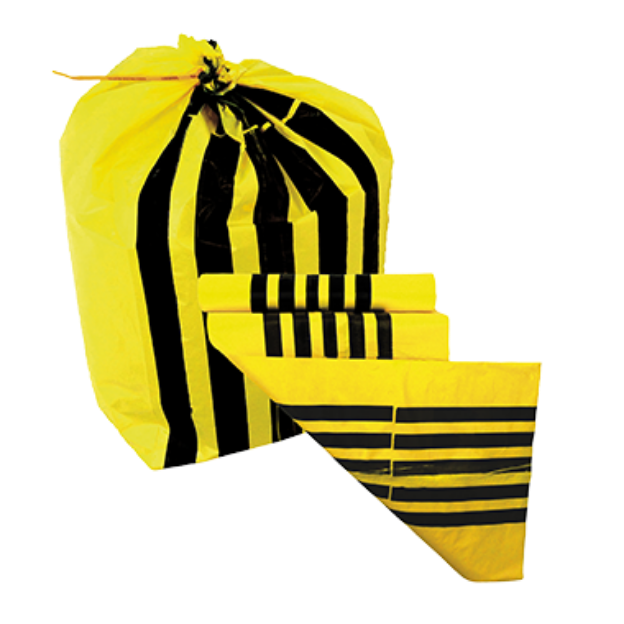Incorrect medical waste disposal is commonplace across the globe. It is due to inexperience, a lack of proper waste disposal and management procedures as well as insufficient human resources and the lack of importance given to disposal of waste from medical facilities.
Medical wastes don’t always originate from clinics or hospitals. They can come from medical supplies like swabs and bandages from patients who have not received proper training in proper disposal methods.
Lack of understanding of proper disposal is the reason why they aren’t properly disposed of. Even junior clinical officers do not have adequate education on proper disposal practices.
There are many nations that do not have appropriate rules for offensive waste disposal or have them, yet don’t enforce the rules. This creates very serious dangers to humans and animals.
Keep an eye for these medical wastes:
-
Syringes and needles wash onto shorelines.
-
Infected blood is thrown into the garbage can seriously pollute soil around the area.
-
Careless or ineffective handling of pathogens, which can be released accidentally, releasing them in water and air.
The medical wastes are classified as chemical, biological or radioactive. Whatever the kind they all pose a threat to human health and the environment if disposed in a manner that is not properly.
These include human tissue waste, as well as animal waste that results from biological, medical and dental procedures as well as research in the field of veterinary medicine.
https://www.trikonclinicalwaste.co.uk/wp-content/uploads/2022/07/Offensive-Waste-Bin.jpg
Air pollution
The majority of offensive waste bag are contaminated with microorganisms that are introduced into the air as a form of spores or as pathogens.
These often contain dangerous chemicals like bleach, acid or even oil. These must be removed from safe, properly labeled containers.
Pollution can also result from people who burn such wastes like plastics, paper as well as other medical containers and substances.
The accumulated chemicals could cause problems in the layers of the ozone in time. Certain garbage releases harmful gases like methane that contribute to global warming.
Contamination Of Waterways
Here are a few ways in which medical waste could release pathogens and pollutants:
Poorly constructed landfills can contaminate drinking water via underground water channels. Water facilities should be properly designed and operated, or maintained.
Incineration using unsuitable substances or improper incineration, which release pollutants into the air. Incineration of materials that contain chlorine may result in dioxins and furans.
These carcinogens are known to cause cancer in humans and have been linked to adverse health adverse effects. Also, when materials containing heavy metals like mercury, lead and cadmium, they will be burned; these harmful metals will be discharged into the environment.
The Spread Of Communicable Diseases
Incorrect disposal of waste from health care can expose patients and doctors and people in general to the risk of contracting infectious diseases especially those with less or no education on personal and occupational security.
The number of injections is more than 16 billion is expected to be administered each year. Since not all needles and syringes utilized during these procedures are properly cleaned, there’s a possibility of infection and injury which is a result of the potential to reuse.
Injections with a contaminated needle and syringe can increase the possibility of HIV as well as other infections like Hepatitis B or C.
There are other dangers for those who go to waste disposal facilities. Individuals who manually separate hazardous waste from hospitals are also at a higher danger of contracting infections.
However, such practices are widespread across the world, with a particular focus in middle and low-income countries. Waste handlers face risk of being exposed to toxic or infectious substances as well as needle stick personal injuries.
Other risks to infection that could arise from improper disposal of medical waste includes the spread of microorganisms resistant to drugs in the environment, originating from health facilities. They can trigger a variety of diseases even after release into the surrounding environment.
More Attention And More Diligence
The need for greater care and attention when it comes to the disposal and management of waste from healthcare. This is the most effective method to reduce the significant health burden that comes with the poor practices observed in the current practice.
Here are some of the key aspects which could to improve the way that medical waste management
Enforcement Of The Waste Management Laws For Healthcare Law
Long term solutions, which consist of constructing a complete system for managing medical waste, and allocating resources to support the proper management of medical waste and disposal.
Raising awareness about the health risks associated with waste and providing guidelines for safe methods.
selecting and advocating for environmentally-friendly and safe management choices that can shield people from dangers while handling, collecting or transporting, storing, disposing or treating;
In the end, proper handling of offensive waste from medical facilities is an all-encompassing responsibility for healthcare facilities, clinicians as well as the general public.
The commitment and support of the government are essential to achieving long-term and lasting improvement in this field. However, you must take action immediately and in a responsible manner which starts with YOU.
Best Practices For Preventing Transmission Of Infections And Viruses
In the medical industry Medical waste management is an essential task that can sometimes receive less attention than is necessary and is often handled poorly, can lead to the spread of infections and viruses.
The results would not just put your staff and patients at risk of getting sick and apprehension, but could also be devastating to the community around you and expose your company to legal action and fines from the government.
Who’s At Risk?
Patients
We’ve all read news stories about sharps that have been reused rather than being disposed of after a single use. Reuse of single-use sharps may cause infection among patients or between a practitioner and patient.
Practitioners
Failure to utilize puncture-resistant containers to remove sharps and needles is a common occurrence and poses the risk of infecting the practitioner, which can then spread to patients or other physicians. Recapping needles is a good idea to practice in the same way.
After a virus or infection has been transferred, anyone the infected person comes in contact with could be at risk, which includes family, acquaintances, and members of the community. If medical waste isn’t properly handled even the waste procurement team is at risk of getting sick.
Public
When clinical waste collection is removed from the hospital, it may cause contamination to the general public if it is not handled properly. It is essential that the waste is handled by a trusted medical waste management firm and processed at an establishment that is able to handle proper and secure disposal.
Essential Practices To Reduce Infection
Train Personnel
The risk of harming patients by inadvertently trying to heal patients is unproductive and reckless. Everyone who handles medical waste of any kind, be it at a medical facility or dentist’s office or tattoo salon, funeral home, veterinary office or any other place, should be taught the proper disposal and disposal of any medical debris.
Set Policies
It is a mistake to assume that everyone is aware of — and adheres to the stringent and complicated medical waste disposal regulations without a written procedure and continuous training is a huge error. Guidelines and procedures for the way waste is handled must be top of the list for all medical waste producers.
Segregate Waste
Sharps, non-contaminated waste and waste that is contaminated should be stored in clearly marked containers until the point of use until they are taken care of.
Items that are only used once, such as the surgical glove, some sharps and many other items, should be disposed of properly after the use. Items that are multi-use are required to be sterilized following use.
A Low-Cost Solution
Medical waste disposal can be a costly aspect of working in the medical industry, and there is always a feeling of need and pressure to discover ways to reduce this expense at an absolute minimum. However, cutting corners can increase the chance of errors that can lead to dangers to health and safety.





